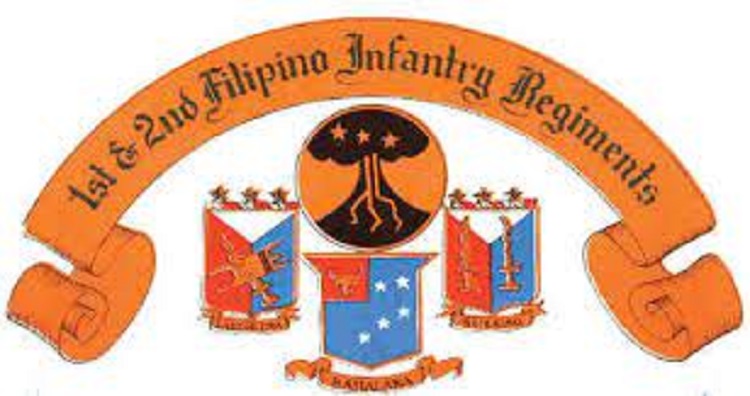The story of a top secret Filipino unit that fought Imperial Japan in Occupied Philippines
The tensions growing with China’s incursions in the West Philippines Sea have again revived similar times during the early 1940s when Imperial Japan began expanding its empire by invading China, then Southeast Asia including the Philippines.
Author Marie Silva Vallejo recalls those turbulent times in her new book, “Dauntless”, about a secret Filipino group who volunteered to do secret missions “behind enemy lines’ in Occupied Philippines. The group’s exploits were so hush-hush that even after nearly 80 years, little is known about them.
Vallejo inadvertently started her research when she became curious about how her father, Lt. Col. Saturnino “Tony” Ramos Silva, was involved in secret operations during World War II.
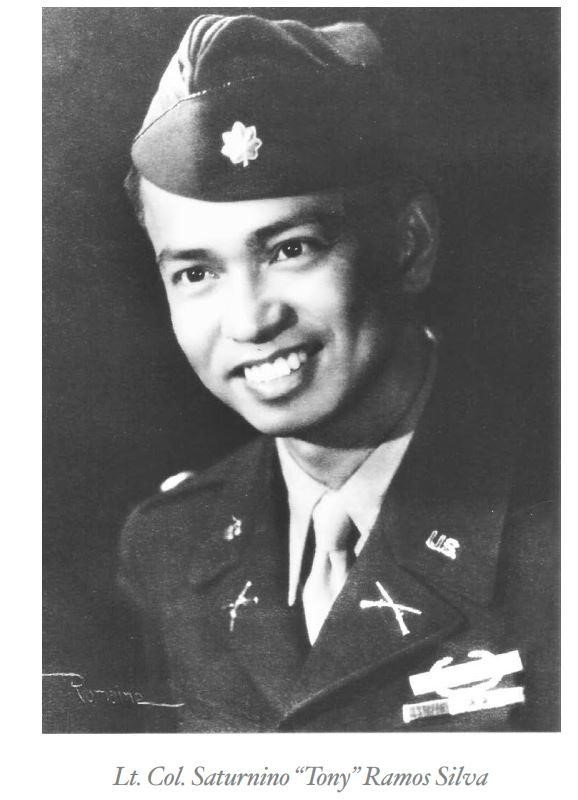
In her book review published in The Epoch Times, Anita L. Sherman writes:
“Admitting that she hadn’t paid that much attention to his military service as a girl growing up, as an adult, she wanted to learn more.”
“She visited museums and libraries, national archives, and sifted through boxes of military records as well as conducted interviews; her meticulous and exhaustive research spanned some 10 years.”
“The result is a labor of love not only bringing her father’s accomplishments to light but countless others who served in these regiments formed under the presidency of Franklin D. Roosevelt.”
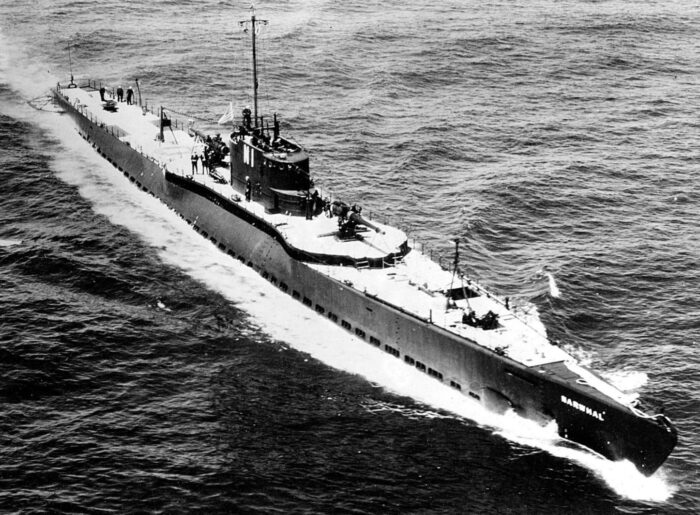
“What she unearthed was a number of clandestine operations that were critical during the war effort in the Pacific. Her father, for example, was involved in top-secret submarine fact-finding missions known only to Gen. MacArthur and his staff.”
In a story by Jordan Baker of the Times-Herald of Miami, the author spoke at length about how she found out about the secret Filipino intelligence unit created by US President Franklin Delano Roosevelt.
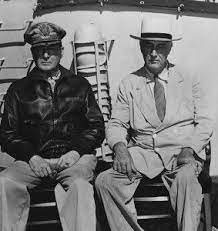
“In researching the book, Vallejo unpacked buried information on her father’s unit. Upon asking libraries and researchers about the Filipino secret units, most were certain that they did not exist.
Vallejo’s father served in the First and Second Filipino Regiments in the U.S. Army and the First Reconnaissance Battalion created by President Roosevelt. The president constructed the Filipino unit to fight in the islands. The secret mission men brought weapons and supplies to keep the guerrillas’ morale high to continue the resistance.”
On Feb. 19, 1942, Secretary of War Henry L. Stimson announced the creation of a Filipino fighting force that would include Americans of Filipino ancestry as well as resident Filipinos to serve in the U.S. Army. By the summer of 1942, the First Filipino Infantry Regiment was activated at Salinas, California. By October 1942, the Second Filipino Regiment was established. (Sherman, 2023)
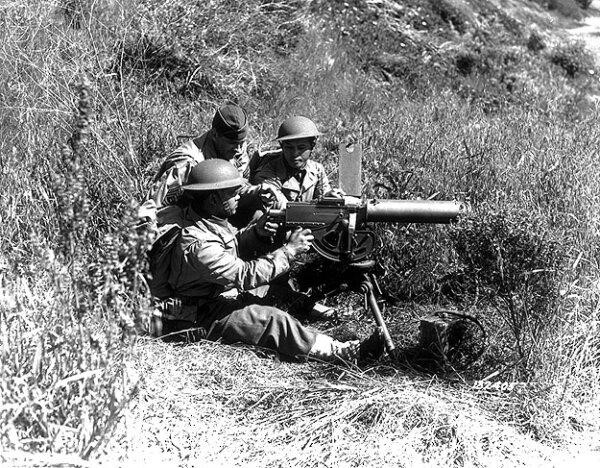
Wrote Terri Torres of the FANHS Museum Board in 2021 The APA Living Today Vol. 3, Issue 6-Anniversary Edition:
Enduring extreme racism, Filipinos were forced into low-paying, back-breaking jobs in the agricultural fields on the west coast, the canneries in the Northwest and in service industries in the cities and towns along the way to the east. They were loyal to the families they left behind by sending home their meager earnings. When they received news of the bombing of Pearl Harbor and the invasion of their homeland by the Japanese, these Nationals petitioned and fought for the right to join the United States military.
After President Roosevelt changed legislation in 1942, Filipinos could enlist in the military. Migrant workers, students, domestic helpers, musicians, doctors, and other professionals from across the nation enlisted with the burning desire to serve and they came by the thousands.
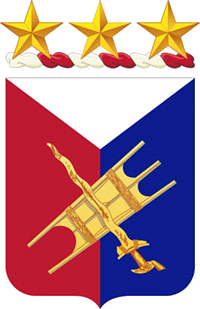
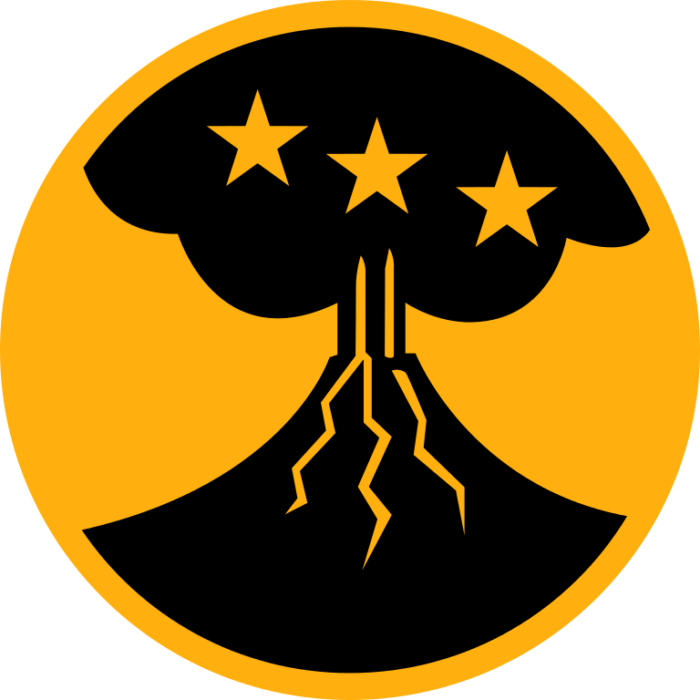
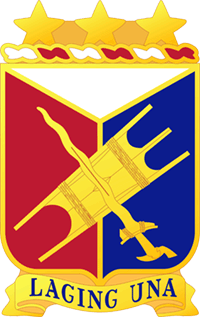
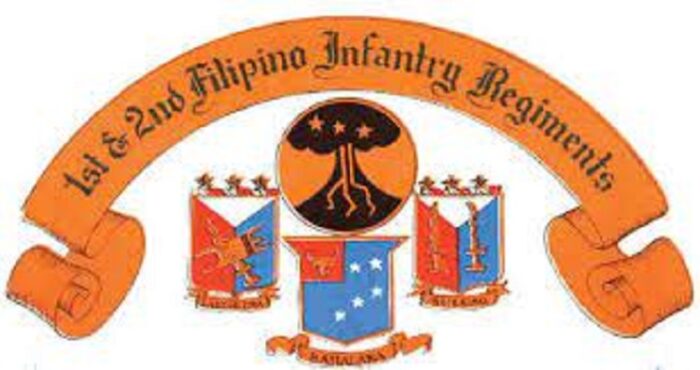
In March 1942, the 1st Filipino Infantry Regiment was activated in San Luis Obispo, California, and was so large they eventually had to create two regiments, the 1st Filipino Infantry and the 2nd Filipino Infantry (also known as “California’s own”).
“Nobody knew,” said Vallejo. “They said no, there were no Filipino men from the U.S. I said, ‘No, there were.’ They hardly knew about it. So I had to look in all the archives and libraries in the U.S. It was the U.S. National Archives and the MacArthur Library that provided the most information. That’s when it started to piece together, but the information was so scattered.”
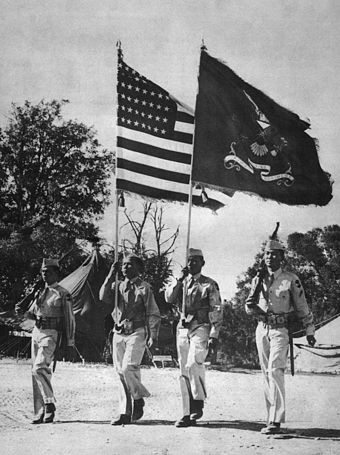
Vallejo believes it was imperative to tell this story, not just regarding her father, but all of the men on the unit.
“People may ask why these men even want to volunteer and fight for America when they underwent so much racism, hurt, and disadvantages at that time. But they did. They did so they decided to fight for America to remove the invaders from their motherland,” said Vallejo. (Baker, 2023)
During World War II and Japan’s invasion of the Philippines, Filipinos living in the United States of America up and volunteered for the military–burning with the desire to return to their motherland and repel the enemy.
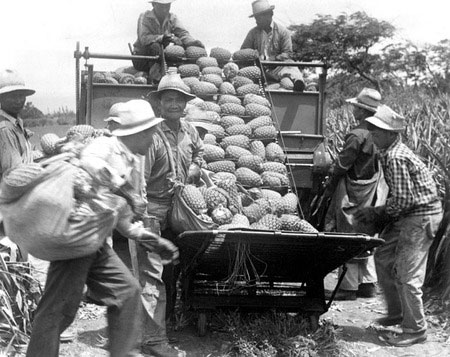
The question arose: why did they join when their entire life in California was debased with systemic and rampant anti-Filipino sentiment and legislation? What complicated patriotism had made thousands of Filipino men in America volunteer into the Army despite decades of horrible inequities inflicted upon them? (Eastwind Interview with Alex Fabros Jr and Lillian Bando, 2023)
Vallejo spent a decade gathering information and writing this book. Initially, Vallejo decided she would contribute to the book with research and allow a writer to compose the book. However, the seven writers she interviewed all insisted Vallejo create this book on her own. (Baker, 2023)
“I feel like I gave birth to something, ” said Vallejo. “I really didn’t think I was capable enough of writing because I’m more of a researcher, I can dig up the dead. But to put it all together, it was difficult. I found persistence and perseverance because many times I wanted to give up and I didn’t think I could be the writer.”
Vallejo feels strongly about the research she uncovered and hopes to share it with different audiences.
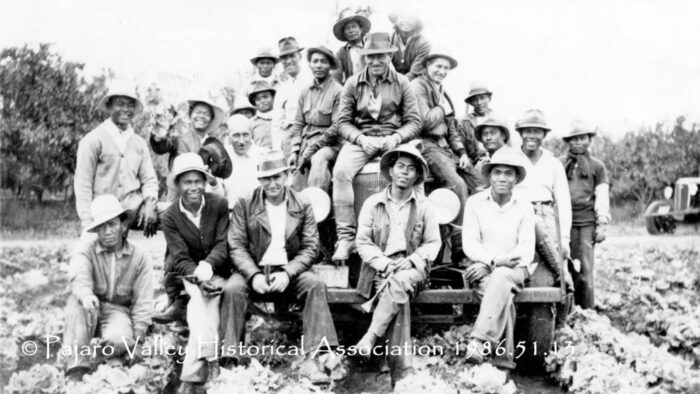
(Photo © Mary OliverPajaro Valley Historical Association)
“I wanted to disseminate the information in this story about these men,” said Vallejo. “They were also the first generation of U.S. citizens in the United States, and then the children became U.S. citizens. They were the beginning. Because they had to be naturalized by the U.S. government so that they could also bear arms.”
“I wanted to show the close relationship that the Filipinos had with the Americans at that point in time, even though racism was really rampant. There were restaurants that had signs saying “No dogs or Filipinos allowed.” The Filipino men would get lynched if they were seen with a white woman. It was that bad. But they still went on to fight for America to remove the invaders from their motherland.” (Baker, 2023)
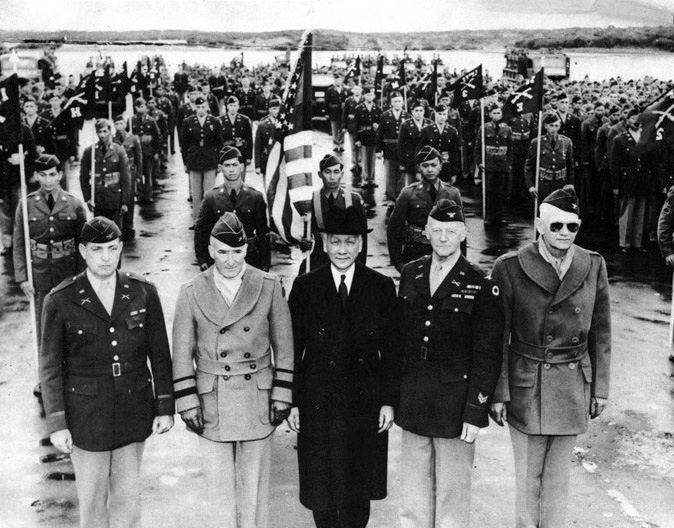
(T. C. (Ted) Austin, Army photographer)
But to the author’s credit, the subject matter is deep and her coverage is richly detailed and extensive. She is a remarkable researcher, and the length and breadth of her narrative is full of historical context and goes even further. She includes specifics, even expressing what individual soldiers were feeling and thinking about their predicaments; this information was garnered from newspaper articles and letters.(Sherman, 2023)
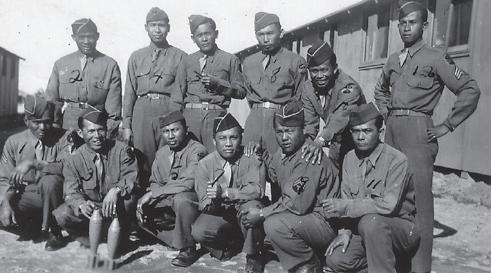
(2021 The APA Living Today Vol. 3 Issue 6-Anniversary Edition)
For World War II enthusiasts, those interested in the Filipino American experience, and preservers of military history will relish that she persevered and put her research into print. The text includes numerous photographs from that period—many harsh reminders of the pain of war. There are nearly 200 pages of appendixes and source materials. Many of those pages are filled with lists of names: thousands who served, their units, their dates of service, and where they served. It is a litany of daring lives, well lived for having served their country.
It is a legacy not to be forgotten.
The Forgotten
According to the Filipino Veterans Recognition and Education Project, more than 260,000 Filipino and Filipino American soldiers defended the United States and the Philippines during World War II. The bravery of these soldiers was integral to the American victory in the Pacific.
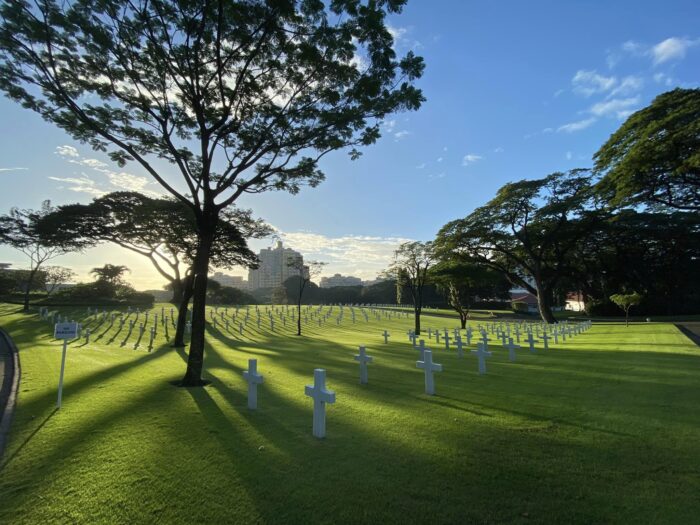
For decades, their accomplishments were largely ignored. In 2016, the Filipino Veterans of World War II Congressional Gold Medal Act was signed into law. In October 2017, more than 600 veterans were awarded the Congressional Gold Medals at the Emancipation Hall at Capitol Hill. After 75 years, Filipino American WWII veterans earned the recognition they long deserved.
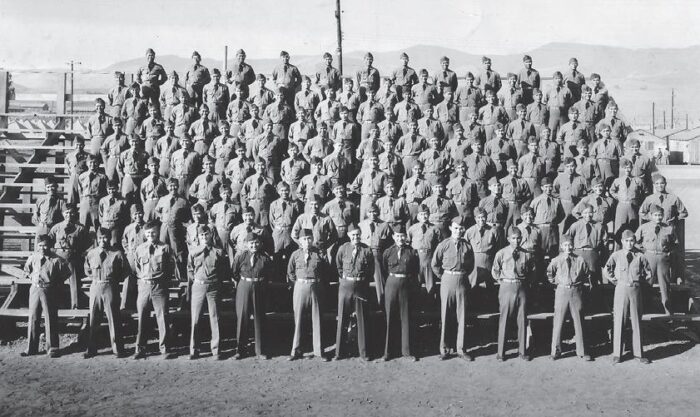
In an online review posted November 15, 2023 by Hubert U. Caloud, Sgt Maj, USMC, rates Dauntless as “a wonderful addition to my WW2 Pacific Library”. Caloud is a Federal Employee of 20 years in American Battle Monuments Commission cemeteries in Europe and the Philippines.
“For many wars the history of Bataan and Corregidor focused on American Units and Commanders although Philippine Commonwealth Army units mobilized and integrated in the US Armed Forces in the summer of 1941 manned almost all the front line on Bataan, suffered many more deaths on the Death March and in Camp 0’Donnell than suffered by the American manned units. This has gotten better coverage in recent years filling in an important gap.”
“What this book does is document the service and sacrifice of Filipinos who were in the Continental US and Hawaii who joined the US Armed Forces. Kudos to the author for her meticulous research.”
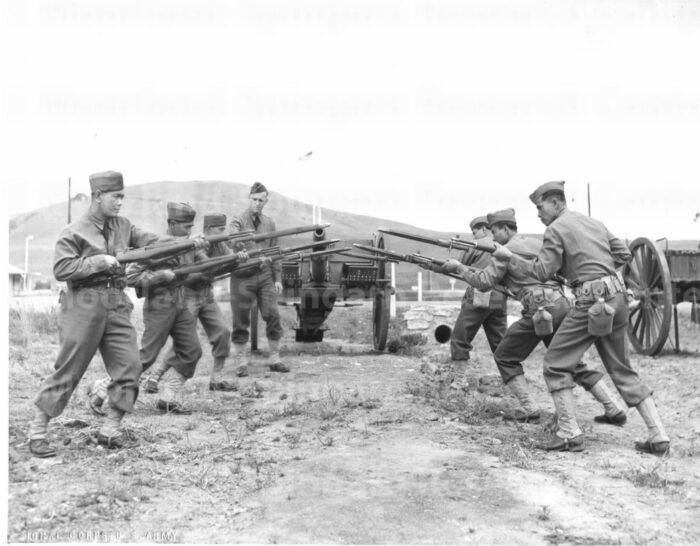
“There were many varied types of service in Filipino Infantry Regiments, and in more specialized service training in Australia and inserted into the Philippine Islands for special missions. It’s service not covered extensively elsewhere that I know of and was a pleasure for me to read. Not just the military history but the history of immigration into the US, their entry into the US Armed Forces and their lives afterward.”
“I think any reader will be surprised at the amount of information in this book. It’s organized well covering all the facets of their service. I think it is an important book for a WWII library and kudos to the author for dedicating the immense amount of time it had to have taken to gather all this information and turn it into a readable narrative.”
About the author
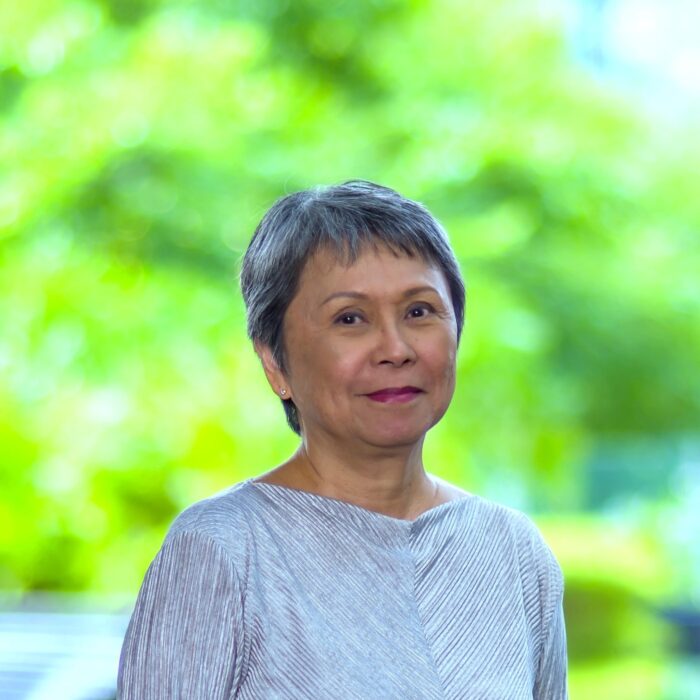
Marie Silva Vallejo has a degree in Education and pursued graduate studies in Psychology. Her corporate life was in Data Security and Internal Audit at Intel Corpora on in Santa Clara, California. She authored The Battle of Ising, a WWII battle for the liberation of Mindanao, Philippines. She was on the Board of the American Historical Collection in Manila. She has managed the Museum Volunteers of the Philippines (MVP)’s WWII History course modules and given talks on WWII subjects. She spearheaded the scanning of the Guerrilla Recognition Program files in the Philippine Archives Collection at the US National Records and Administration (NARA) that began the Philippine Veterans Administration Office’s (PVAO) mission to scan the entire Collection and make it available online to show the Filipinos’ contribution to WWII history.
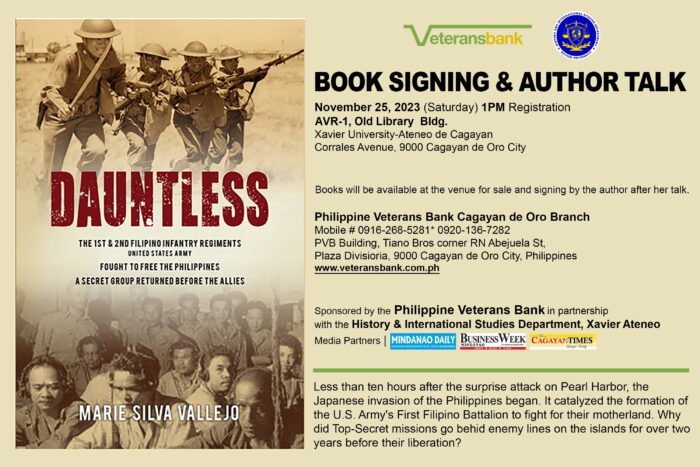
Join the Free Author Talk and Book Signing
The author will be speaking about her book and research this coming Saturday, 25 November 2023 at the AVR-1, Old Library Building of the Xavier University-Ateneo de Cagayan downtown campus at Corrales Avenue. Copies of her book purchased after the event will be autographed by the author. Registration for the free event starts at 1PM. This event is sponsored by the Philippine Veterans Bank in cooperation with the History & International Studies Department of Xavier University-Ateneo de Cagayan (Xavier Ateneo) headed by Chairperson Fr. Amado T. Tumbali Jr., SJ.
-30-
